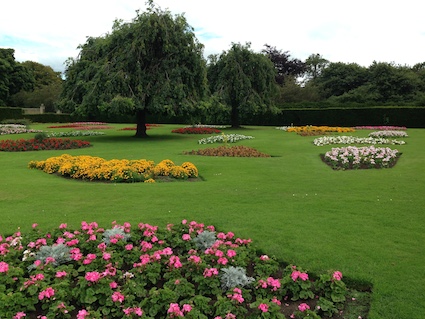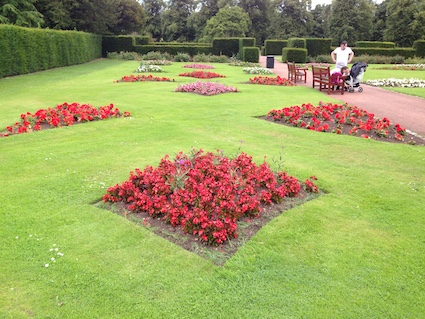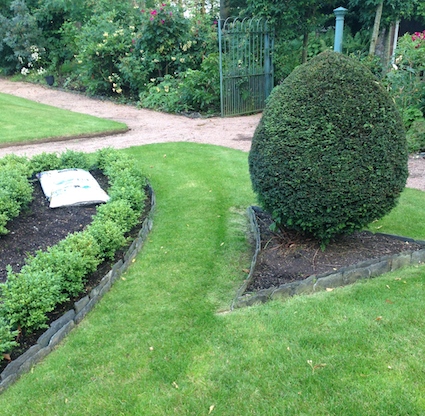
Last summer I was visiting Saughton Park and Gardens in Edinburgh. It is a very welcoming garden. Within formal garden area, there is this bedding display. I was fascinated by the layout and shapes of the beds. It was clearly not the level of formality of parterre gardens. In particular, many of the bed shapes were curved.

This immediately led me down the path of wondering why the beds had been created with curved edges. I didn’t think curved triangles existed. After all the criteria for a triangle is 3 straight line segments, 3 vertices, the sum of the angles of each vertex is 180 degrees and that the shape lies on a flat plane, i.e. it is two-dimensional. The moment you add in curves, the angles change too. They appear to total less than 180 degrees. Thus can such triangles be called triangles?

After much exploration online, I eventually found out about hyperbolic triangles. The geometry that we learn about in primary school is largely euclidean and this is where the straight lines matter. They help us work out the area and other aspects of geometry which we rely on including position and movement work. With hyperbolic geometry everything becomes curvy. I eventually found the inverted curve triangle on this website – sitting on a saddle-shaped plane.

I also chanced across another possible explanation. In the book Understanding Mathematics for Young Children, the authors, Haylock and Cockburn refer to topological transformations which can happen when two-dimensional shapes undergo a distortion where their properties have undergo a change. This is where a network of paths illustrate the idea nicely.

In the above photo, you can see that one side of the triangle has undergone a topological transformation. One of its sides has become curved in order to keep the layout of the design balanced and to allow for easier access to the borders .

Now that I’ve found that curved triangles may sometimes exist, you would think that was that. However, look at the photo above? I never realised that two-sided shapes existed…
Note: I’ve not sure that my explanations have been sufficiently rigorous in this approach. Please do correct any mistakes in my thinking. I’m on a steep learning curve… forgive the pun!





























